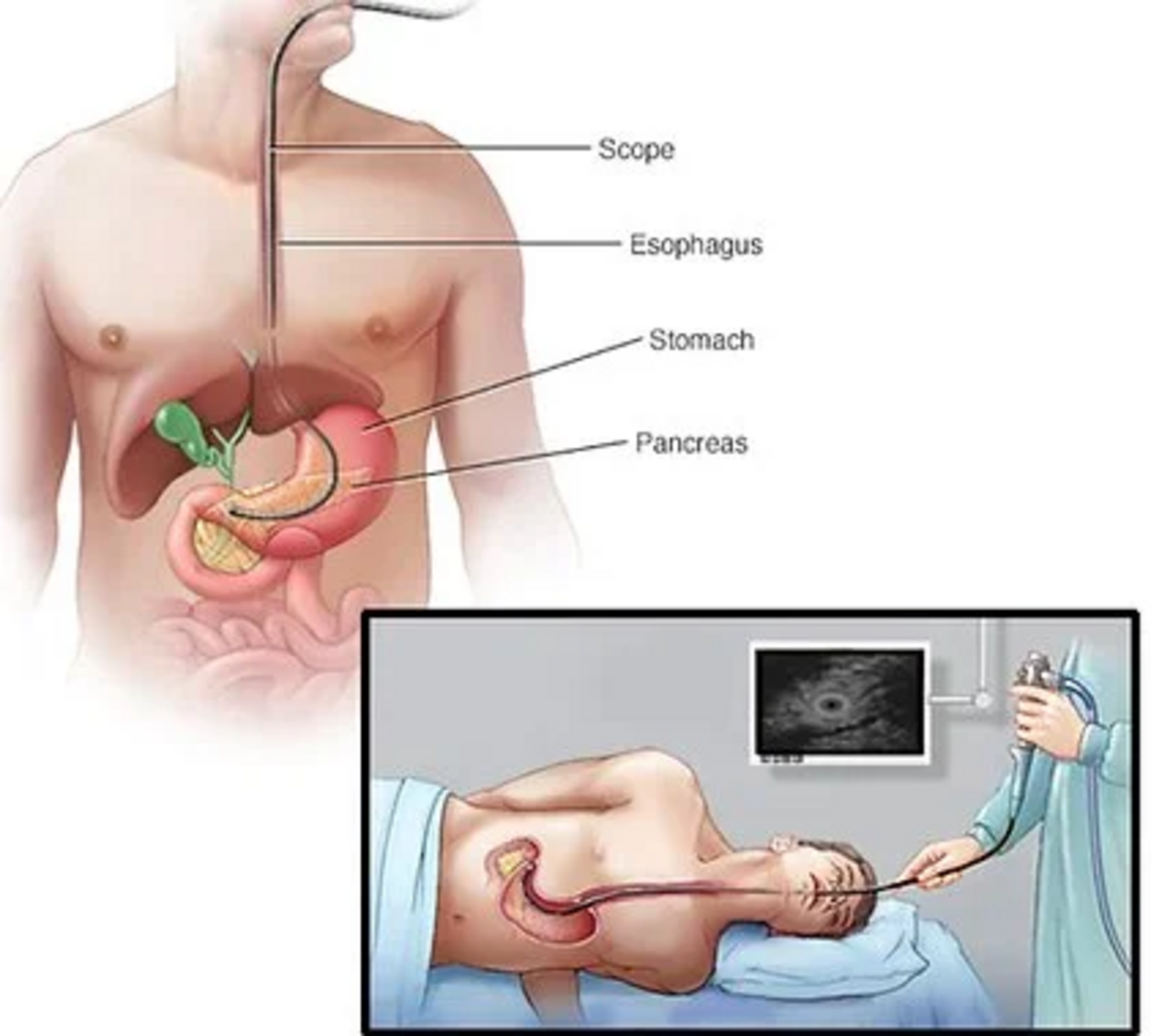What is Endoscopic Ultrasound (EUS)?
Endoscopic Ultrasound (EUS) is a minimally invasive procedure designed to diagnose and assess gastrointestinal (digestive) and lung diseases. Using a special endoscope equipped with high-frequency sound waves, EUS provides detailed images of the walls and lining of your digestive tract and chest. It also helps in evaluating nearby organs like the pancreas, liver, and lymph nodes.
EUS with Fine-Needle Aspiration (FNA)
When combined with Fine-Needle Aspiration (FNA), EUS becomes a powerful diagnostic tool, allowing your doctor to biopsy fluid and tissue from the abdomen or chest for further analysis. EUS with FNA can serve as a less invasive alternative to exploratory surgery.
Additionally, EUS is utilized for certain treatments, such as draining pseudocysts in the pancreas.
Why Is EUS Done?
EUS is performed to identify the cause of symptoms like abdominal or chest pain and to evaluate the extent of diseases in the digestive system and lungs. It is especially useful when reviewing the findings from imaging tests like CT or MRI scans.
EUS may be used for the following evaluations:
- Cancer Diagnosis: Esophageal, lung, pancreatic, stomach, ampullary, and rectal cancers.
- Lymphoma, Neuroendocrine Tumors: Including detection and staging of these conditions.
- Pancreatitis and Pancreatic Cysts: For precise identification and management.
- Bile Duct Stones: To help with diagnosis and treatment.
How EUS Can Help:
EUS is beneficial in various ways, including:
Cancer Staging:
- EUS helps assess the depth of tumor penetration in cancers such as esophageal, gastric, rectal, and pancreatic.
Tumor Spread (Metastasis):
- EUS can determine whether cancer has spread to nearby lymph nodes or other organs.
Evaluate Abnormal Findings:
- EUS is helpful in assessing abnormal results from previous imaging tests, such as pancreatic cysts.
Guiding Procedures:
- EUS is effective for guiding the drainage of pseudocysts and other abnormal fluid collections in the abdomen.
Procedure and Preparation
EUS is typically performed on an outpatient basis and is well-tolerated by most patients. To ensure accurate results, preparation may involve fasting for at least 6 hours before the procedure. Your doctor will provide specific instructions, especially if you are on medications such as blood thinners (which may need to be stopped before the procedure). If you have chronic conditions like diabetes or high blood pressure, your doctor will offer tailored guidance regarding your medications.
What to Expect During the Procedure:
Relaxation Medication:
- You will likely be given medication to help you relax before the procedure.
The Procedure:
- A thin, flexible tube (endoscope) will be inserted through your mouth and passed through your digestive tract. A small ultrasound device (transducer) in the endoscope sends sound waves to create clear images of surrounding tissues.
Fine-Needle Aspiration (if necessary):
- If FNA is required, the doctor will extract fluid and tissue samples for further analysis.
Interpreting Results
A gastroenterologist, specializing in digestive diseases, will interpret the EUS images. If fine-needle aspiration is performed, a trained pathologist will analyze the biopsy results. Your doctor will discuss the findings with you and recommend the next steps based on the results.
Where Is EUS Done?
At RL Gastrocare Clinic, we perform EUS at empanelled hospitals equipped with the necessary technology to ensure the best possible care for our patients.
For more information or to book an appointment, contact us at RL Gastrocare Clinic, Swargate, Pune.